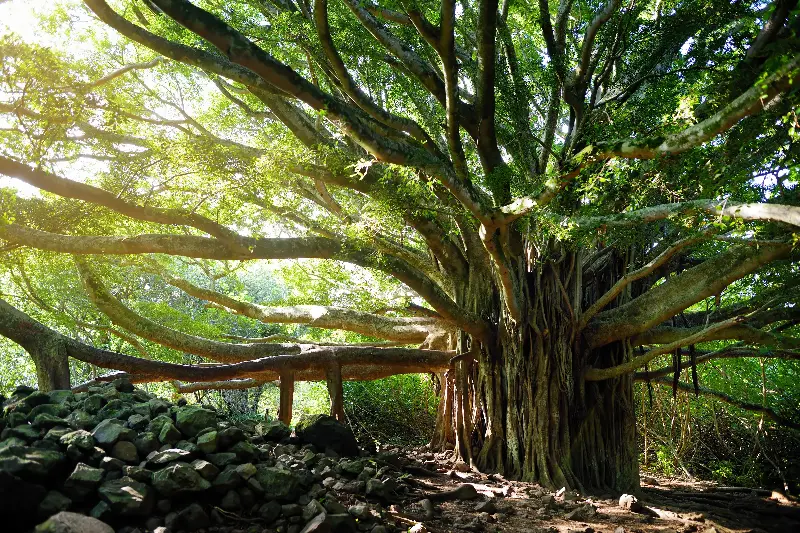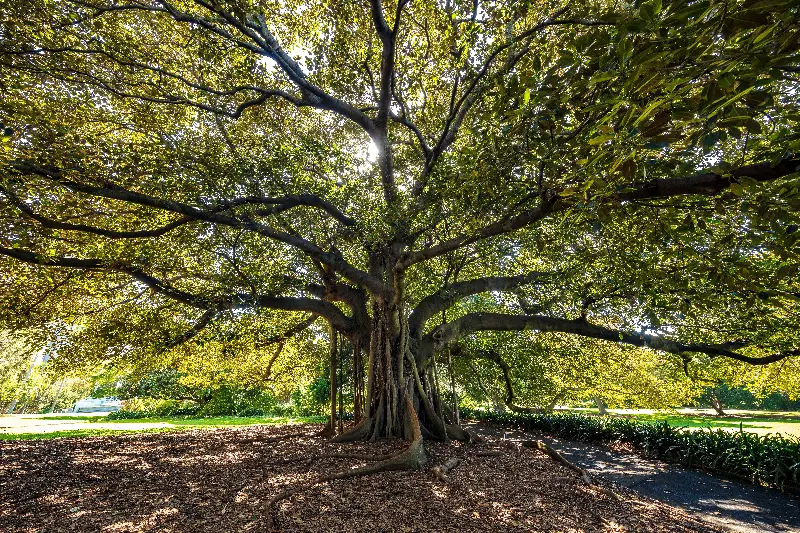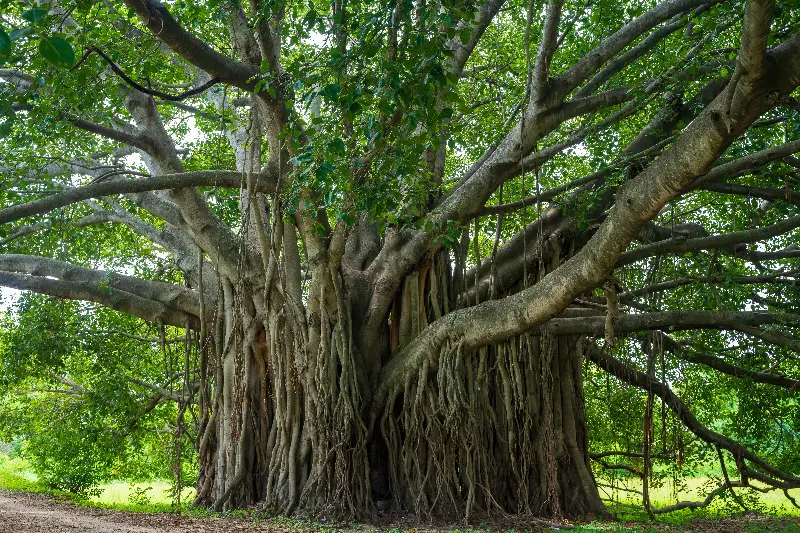Somewhere in the heart of tropical landscapes, an awe-inspiring giant silently commands the forest floor and captures the curiosity of all who wander beneath its broad shade. The banyan tree, often referred to as “nature’s largest living organism,” is not just another tree lining the horizon; it is a marvel of botanical engineering, mystery, and ancient legend. Its majestic presence has sparked fascination from botanists, poets, and travellers throughout history—and for good reason. Let’s journey into the incredible world of the banyan tree, unveiling the secrets that make it both a biological wonder and a cultural icon.

Enigmatic Origins And Botanical Brilliance
Native to the Indian subcontinent but now found in tropical and subtropical regions around the world, the banyan tree (Ficus benghalensis) is a species of the fig tree family. What sets the banyan apart is not only its sheer size but its extraordinary growth pattern. Unlike most trees, a banyan begins its life as an epiphyte—a “strangler” fig that germinates in the crevices of another tree’s branches. From there, it sends down aerial roots that traverse the air until they reach the ground and take hold. Over time, these roots thicken and harden into trunks, creating a vast network of interconnected supports.
One single banyan can appear as if it’s a forest, all linked together by tendrils that span impressive distances. The most famous example is the Great Banyan in Kolkata, India. With over 3,000 aerial roots descended to the ground and its canopy covering more than 1.6 hectares (nearly the size of two football fields), walking beneath its branches truly feels like stepping into another realm.
Architects Of Life: Ecology And Adaptation
Banyan trees are much more than spectacle; they are veritable hotspots of biodiversity. Their expansive canopies provide shelter and sustenance for an astonishing array of creatures. Birds nest in the crooks of their sturdy branches, monkeys leap between the aerial roots, and hundreds of insects buzz in the shade. The figs produced by banyan trees offer a vital food source, especially in seasons when other fruits are scarce.
What’s even more intriguing is the tree’s symbiotic relationship with fauna. Certain species of wasps are the exclusive pollinators of banyan figs. The fertilisation of the tree is completely dependent on this partnership—a delicate dance of plant and insect that has evolved over millions of years. Without the wasps, the tree could not reproduce, and without the tree, the wasps would have no nursery for their larvae.
Beyond supporting wildlife, banyans play an essential ecological role in stabilising soil and maintaining groundwater levels. Their extensive root systems bind the earth, preventing erosion and flooding during heavy rains—a natural service especially vital in monsoon-prone regions.

The World’s Largest Living Organism?
While you might have heard the claim that giant sequoias are the world’s largest trees, when measured by the area covered, the banyan takes the crown. Technically a single organism, a mature banyan expands by continuously sending down new roots and trunks. The Thimmamma Marrimanu Banyan in Andhra Pradesh stretches over five acres, making it the world’s broadest tree canopy. Unlike tall-standing giants, this tree creates a horizontal sprawl, offering dense shade that can shelter thousands of people at once.
Remarkably, a banyan can live for centuries, even millennia. As the central trunk ages and dies, the aerial roots that have matured into trunks carry on the legacy, making the tree nearly immortal in theory. For this reason, in many cultures, banyans symbolise eternal life, resilience, and the interconnectedness of all living things.
Mystical Legacy: Cultural And Symbolic Significance
The banyan tree is steeped in myth and meaning. In Hindu tradition, it is considered sacred—often planted near temples, it is associated with the god Vishnu and believed to be the resting place of the god Krishna. To sit under its branches is to meditate in the company of saints. In Buddhism, the banyan’s close cousin, the Bodhi tree, sheltered the Buddha during his journey toward enlightenment.
Throughout rural India and Southeast Asia, local meetings and ceremonies are often held beneath the banyan’s shade. The tree’s endless roots and trunks evoke community and unity—a place where stories are traded, decisions made, and generations gather.
Elsewhere, the banyan’s spreading form and enigmatic aerial roots have seeded local legends of haunted groves and mystical spirits. Its labyrinthine silhouette after dusk has inspired storytellers for centuries, blending natural history with the supernatural in local folklore.

Hidden Science: The Secret Life Of Roots And Leaves
On a microscopic level, the banyan is just as marvellous. The leaves, thick and waxy, are equipped to retain moisture in hot climates, conserving water with exceptional efficiency. The aerial roots, aside from structural support, absorb nutrients directly from the humid air—a clever adaptation to the tree’s rainforest origins.
Researchers have discovered that the complex root system contributes to soil fertility by recycling nutrients trapped in falling leaves and organic debris. This self-nourishing cycle further benefits neighbouring plants and creates a unique, self-sustaining ecosystem beneath the canopy.
In recent years, scientists have even examined compounds in banyan bark and roots for their medicinal potential—ranging from anti-inflammatory properties to traditional remedies for diabetes and digestive problems.
While we marvel at its size and admire its ecological work, it’s clear that the banyan tree is more than just a backdrop for stories or an architectural curiosity. It is a cornerstone of life—mysterious, enduring, and brilliantly adapted for survival. Next time you spot a sprawling mass of trunks and leafy branches, remember that you are standing beneath one of nature’s oldest and grandest masterpieces—a living witness to centuries of human culture and ecological evolution.
